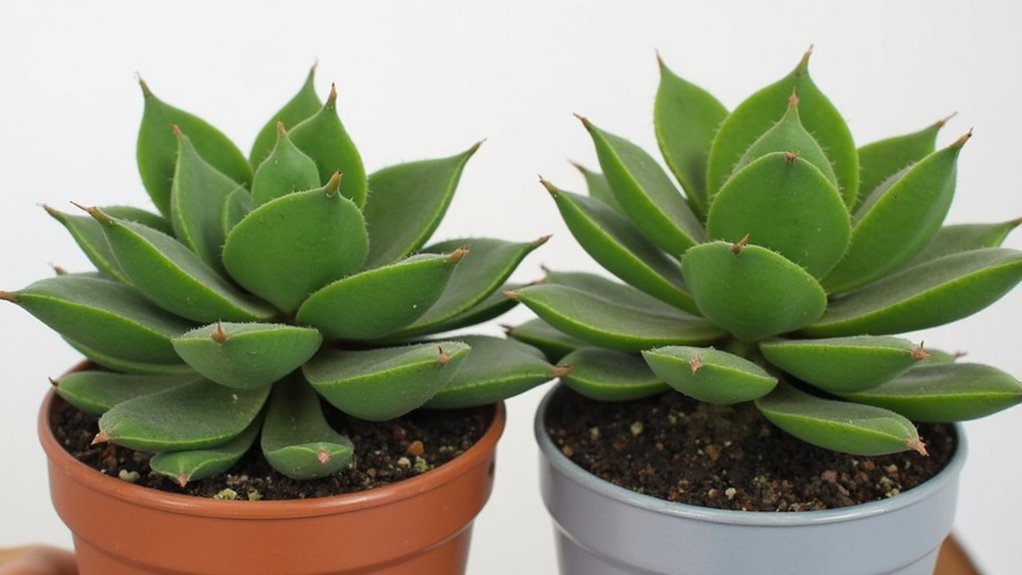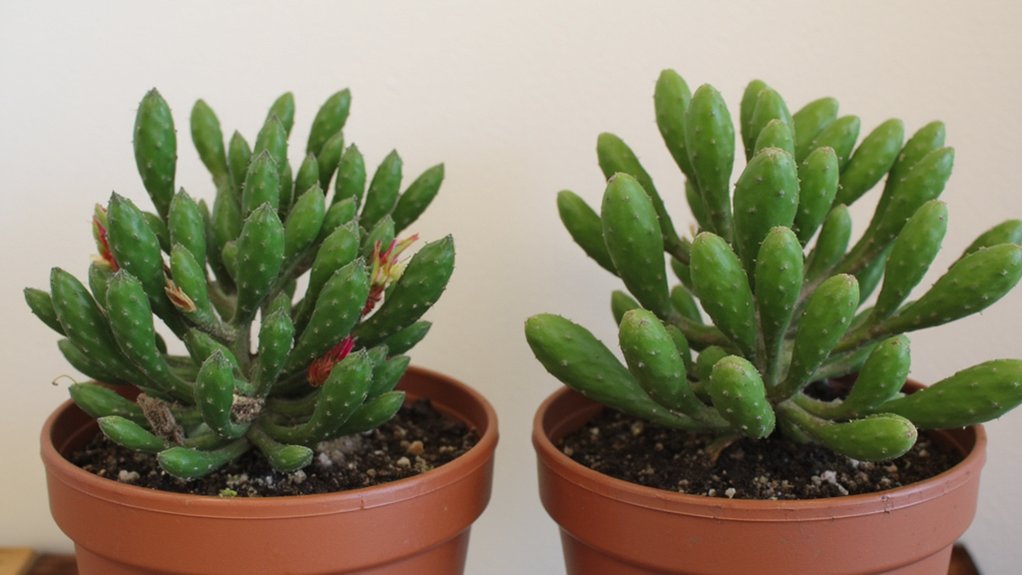While you might assume those holiday cacti brightening up your windowsill during winter are Christmas cacti, there’s a good chance you’re actually tending to their close cousin, the Thanksgiving cactus. These two popular houseplants share similar care needs but possess distinct characteristics that set them apart. If you’ve ever wondered why your “Christmas” cactus blooms closer to Turkey Day, you’ll want to discover the telltale signs that reveal their true identity.
Contents
Physical Characteristics That Set These Holiday Cacti Apart

While both holiday cacti may look similar at first glance, you’ll notice key differences in their leaf segments that make identification straightforward. The Thanksgiving cactus has pointed, claw-shaped projections along its segments, while the Christmas cactus features more rounded, scalloped edges.
You can also spot differences in their growing patterns. Thanksgiving cacti tend to grow more upright with branches that arch slightly downward. Their leaf segments are especially larger, measuring up to 2.5 inches long. Christmas cacti, however, display a more pendulous growth habit with smaller segments, typically 1.5 inches in length, and more symmetrical branching.
Optimal Growing Conditions for Both Varieties

Both holiday cacti need similar growing conditions to thrive despite their distinct physical features. You’ll want to place them in bright, indirect sunlight and maintain temperatures between 60-70°F during the day and 55-65°F at night.
Water these plants thoroughly when the top inch of soil feels dry, but don’t let them sit in standing water. They’ll flourish in well-draining potting mix with 60-70% humidity. During the growing season (March to September), feed them monthly with a balanced, water-soluble fertilizer.
To trigger blooming, reduce watering and expose them to 12-14 hours of darkness daily for 6-8 weeks before their respective holiday seasons.
Natural Blooming Cycles and How to Recognize Them

Each holiday cactus follows a distinct natural blooming cycle that’s triggered by environmental cues. You’ll notice your Thanksgiving cactus typically blooms from late October through mid-November, while Christmas cactus displays its flowers from late November through January.
To identify which cycle your plant’s following, watch for flower buds about 6-8 weeks before the expected bloom time. Thanksgiving cacti form buds when nights become longer (13+ hours) and temperatures drop to 60-65°F. Christmas cacti need slightly longer periods of darkness and cooler temps around 55-60°F to initiate flowering.
Common Care Mistakes to Avoid With Holiday Cacti
Despite their hardy nature, holiday cacti can quickly decline if you make certain fundamental care mistakes. The most common error is overwatering, which leads to root rot – never let your plant sit in standing water, and don’t water until the top inch of soil feels dry.
Don’t place your cactus in direct sunlight, as this can scorch the leaves. While they love humidity, don’t mist the flowers when blooming, as this can cause bud drop and fungal issues.
Avoid sudden temperature changes or drafts from heating vents, which can shock the plant and cause flower buds to fall prematurely.
Tips for Encouraging Healthy Blooms Year After Year
To keep your holiday cactus blooming beautifully season after season, you’ll need to master the art of light and temperature manipulation. Keep your plant in bright, indirect light during spring and summer, then reduce light exposure to 12-14 hours of darkness in fall.
From late September, maintain cooler temperatures between 50-65°F to trigger bud formation. Reduce watering slightly, but don’t let the soil dry completely. Once buds appear, resume normal watering and maintain consistent temperatures.
After blooming, give your cactus a 30-day rest period. Prune any damaged segments and fertilize monthly with a balanced, water-soluble fertilizer during active growth periods.
